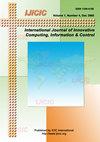Digital Video Summarization: A Survey
IF 1.1
Q4 COMPUTER SCIENCE, ARTIFICIAL INTELLIGENCE
International Journal of Innovative Computing Information and Control
Pub Date : 2023-09-13
DOI:10.11113/ijic.v13n1-2.421
引用次数: 0
Abstract
Video summarization has arisen as a method that can help with efficient storage, rapid browsing, indexing, fast retrieval, and quick sharing of the material. The amount of video data created has grown exponentially over time. Huge amounts of video are produced continuously by a large number of cameras. Processing these massive amounts of video requires a lot of time, labor, and hardware storage. In this situation, a video summary is crucial. The architecture of video summarization demonstrates how a lengthy film may be broken down into shorter, story-like segments. Numerous sorts of studies have been conducted in the past and continue now. As a result, several approaches and methods—from traditional computer vision to more modern deep learning approaches—have been offered by academics. However, several issues make video summarization difficult, including computational hardware, complexity, and a lack of datasets. Many researchers have recently concentrated their research efforts on developing efficient methods for extracting relevant information from videos. Given that data is gathered constantly, seven days a week, this study area is crucial for the advancement of video surveillance systems that need a lot of storage capacity and intricate data processing. To make data analysis easier, make it easier to store information, and make it easier to access the video at any time, a summary of video data is necessary for these systems. In this paper, methods for creating static or dynamic summaries from videos are presented. The authors provide many approaches for each literary form. The authors have spoken about some features that are utilized to create video summaries.数字视频摘要:调查
视频摘要作为一种有助于高效存储、快速浏览、索引、快速检索和快速共享素材的方法而出现。随着时间的推移,视频数据的数量呈指数级增长。大量的视频是由大量的摄像机连续产生的。处理这些海量的视频需要大量的时间、人力和硬件存储。在这种情况下,视频总结是至关重要的。视频摘要的架构展示了一个冗长的电影如何被分解成更短的,类似故事的片段。各种各样的研究已经在过去进行,现在还在继续。因此,从传统的计算机视觉到更现代的深度学习方法,学术界提供了几种方法和方法。然而,有几个问题使视频摘要变得困难,包括计算硬件、复杂性和缺乏数据集。近年来,许多研究人员致力于开发从视频中提取相关信息的有效方法。鉴于数据是连续收集的,一周七天,这一研究领域对于需要大量存储容量和复杂数据处理的视频监控系统的进步至关重要。为了便于数据分析,便于信息存储,便于随时访问视频,这些系统都需要对视频数据进行汇总。本文介绍了从视频中创建静态或动态摘要的方法。作者为每种文学形式提供了许多方法。作者已经谈到了一些用于创建视频摘要的功能。
本文章由计算机程序翻译,如有差异,请以英文原文为准。
求助全文
约1分钟内获得全文
求助全文
来源期刊
CiteScore
3.20
自引率
20.00%
发文量
0
审稿时长
4.3 months
期刊介绍:
The primary aim of the International Journal of Innovative Computing, Information and Control (IJICIC) is to publish high-quality papers of new developments and trends, novel techniques and approaches, innovative methodologies and technologies on the theory and applications of intelligent systems, information and control. The IJICIC is a peer-reviewed English language journal and is published bimonthly

 求助内容:
求助内容: 应助结果提醒方式:
应助结果提醒方式:


